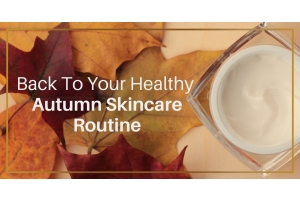Our partners and us collect data and use cookies, email pixels and similar tools to enhance your experience, analyse traffic and for ad personalisation and measurement. One such partner is Google. For more information see our cookie policy
Creams or Oils

Creams or Oils?
Recently many skin care brands have started adding oils and oil serums to their skin care lines. And there are many celebrities claiming they use only oils on their skin. We were told in the past that frequently using oils on our skin can do more harm than good, that oils clog pores, and now the beauty industry taking a new turn and credits oils for numerous benefits they can deliver to our skin.
Having been working in beauty industry and using the most sophisticated skin care cosmetic brands and studying about natural and bio chemical ingredients during the last decade, gave me more understanding on what our skin is able to “eat” efficiently in terms of products penetration, and what it is better not to “eat” in terms of ingredients safety. We make choices of what food to eat and what lifestyle to have in order to stay healthy for longer. Should we be careful of what we “feed” our skin with in order to stay looking younger and be healthy at the same time?
Most of the creams are composed of water and waxes, sometimes with some little oil portion added. When we start using creams, it looks like we get results in the beginning, but in the long run built up waxes tend to clog pores or create a layer that doesn’t let other cream ingredients penetrate more, so it looks like cream stopped working. Molecules are much larger in creams than in oils and most of creams benefit only outer layers of the skin. Oils penetrate deep. If you are looking for younger looking, healthier skin without chemicals, toxins and without trying any “revolutionary” harsh treatments, include oils in your skin care routine. You can use them at least before bed time and use your favourite cream in the morning. Oil has micro molecules and if apart from nourishing you wish to boost some moisture into your skin, spray clean water (rose water is ideal) onto your face and apply thin layer of oil on top. Oil penetrates very deep due to micro molecules (which water can’t do and water based creams also) and it will deliver some hydration into your skin along with nutrients.
Oils are much closer to our skin sebum in composition than creams, so our skin recognizes them and accepts them. And when we age, skin produces less and less oil, so we need to ensure to add it back to have this protective lipid layer that keeps moisture in the skin, thus helps keeping it smoother and younger. Oils are rich in antioxidants, vitamins and minerals and provide deeper penetration comparing to creams, what could be better for our skins?
How to choose oils?
When it comes to facial oils, I prefer 100% pure natural oils and when choosing them, it is very important to pay attention to:
– Method of extraction: The more unrefined and pure, the better. Choose oils marked as: Organic certified, Virgin, Cold Pressed or CO2 extracted (with no oxygen present) especially important for fragile oils like rosehip oil (rich in Omega 3 and 6 polyunsaturated fatty acids). Those are the best qualities you can get and they might have a specific color or smell (depending on the plant characteristics), which should not discourage you, because they are extracted by those most preferred methods to keep nutrients and properties safe.
– Properties of the oil (anti-ageing, rejuvenating, anti-septic etc.). You need to choose the right oil based on your concern and the application method will depend on the purpose. For example anti-septic oils will be applied only to small surfaces – problematic areas, spots.
– Oil bottle color. Ensure that bottle with oil is made of dark-colored glass, not clear glass or plastic. Usually it is dark blue or dark brown color. This is to ensure that all ingredients are kept safe, as for example antioxidants die when exposed to light. Sometimes manufacturers offer their products in clear bottles, but in cartoon packaging. Keep your product in that packaging, when you don’t use it.
To produce good quality oil it requires lots of manual skills and expertise, so do not expect them to be cheap. Mark “Virgin” on a bottle is the highest quality mark, followed by CO2 extracted”.
How to use oils?
On perfectly clean and dry skin. Ensure that there is no residue of make up on your skin; otherwise you are at risk of massaging dirt into your pores. It is very easy to check, whether your skin is perfectly clean or not; after washing your face, wipe it over and over with lotion or rose water moistened cotton disk, replacing it with a new one until the disk doesn’t show any grey color anymore and is perfectly white.
Oils and Oily Skin?
Using only creams is not ideal solution for taking care of oily skin. When it comes to oils, lipids are great exfoliators! You probably heard that lipids dissolve dirt, so many body scrubs have oil in them, not only to moisturize, but dissolve dead cells so they are scrubbed off easily during exfoliation process. The fact is that lipids dissolve lipids.
Any built up sebum and clogged pores will be dissolved and broken up, if you apply oil onto your face, cleanse your face and wash it after. Any fatty acids that oils contain will re-stabilize lipid barrier (you also replace dirty oil with natural and beneficial one), which gels and soaps on the contrary destroy and dry out your skin. This results in skin defending itself and producing even more sebum.
So now you know that oily skin may and need to use oils. However, I would not use any oil on oily skin, as some of the oils could be too heavy or contain different type of fatty acids than required for oily skin and give opposite result. I will cover the topic of oils for oily skin in my other article “Great Face and Body Oils” and “Different Oils for Different Skin Types”.


 Qatar
Qatar UAE
UAE Oman
Oman Bahrain
Bahrain Kuwait
Kuwait



